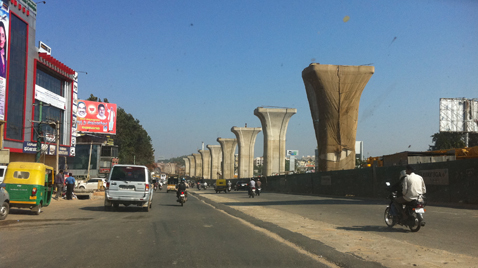
Shortage of talent in the Indian construction sector (building, construction and real estate as well as infrastructure) is a long-term problem and will continue to drive up project costs and risks, according to a recently released report by the National Skill Development Corporation.
The report titled ‘Human Resource and Skill Requirements in the Building Construction and Real Estate Sector (2013-17, 2017-22)’ was prepared by KPMG on behalf of NSDC, based on independent research and analysis.
The report projects that the market value of the country’s construction sector will expand up to Rs.11,954 billion by 2017. It attributes the anticipated growth in the sector to likely increase in demand for affordable housing from the current level of 29 million households to more than 38 million households by 2030, rapid growth in the information technology and financial services space and upcoming expansion plans of businesses in tier II & III cities, estimated investment requirement of $1 trillion during the 12th Plan period for key infrastructure segments such as power, road, railways, ports and civil aviation, expected surge in demand for warehousing space in major tier I & II cities due to upcoming industrial parks and shift in trend towards processed foods, and growth among retailers as a result of increasing consumerism and relaxation of FDI rules in multi-brand retail.
In India, the construction sector is the largest contributor to central exchequer and the second largest employer. More than 45 million jobs are created by the sector directly or indirectly.
Between 2000 and 2013, the construction sector in the country attracted $40,399 million as foreign direct investment. Around 91 percent of the FDI was in real estate development. It is expected to attract FDI of $180 billion by 2020. The sector grew at a CAGR of 9.42 per cent between 2003-04 and 2012-13. Capital investment in the sector is anticipated to rise from $651 billion in 2012-13 to $1,181 billion in 2019-20.
The report estimates that the size of the workforce in the Indian construction sector will increase from over 45 million at present to more than 76 million by 2022.
In construction works, two areas of trades are of utmost importance – mechanical and civil. While mechanical trades require more understanding of machines and mechanical engineering, civil trades are more closely associated with understanding structures and civil engineering aspects. Based on interaction with leading engineering and construction players in the country, the NSDC report lists a set of critical profiles in the sector that currently face enormous skill shortage. Included in these critical profiles are welders and fitters (mechanical trades), benders, scaffolders and carpenters (civil trades), supervisors and foremen (general across all trades and sectors) and machine operators. Certain specialised profiles for specific sectors such as riggers and drillers for the oil and gas sector, stringing and tower building workers for the power sector and prefab steel workers for the steel sector also face significant skill shortage.
The report points towards the various skill gaps that presently exist in the roles of projects managers, site/project engineers, supervisors, bar-benders, masons, plumbers, painters, welders and equipment operators.
Currently, minimally skilled workforce account for 80 percent of employment in the country’s building and construction sector. In terms of employment, technicians and foremen had the maximum growth of 95 percent followed by unskilled workforce (34 per cent) between 2005 and 2011. Only 9.8 million construction workers are registered in the country.
The report suggests a number of measures for overcoming the talent shortage and skill gaps in the country’s construction sector. It seeks incentivization and promotion of collaborative training by government and industry body, grant of financial assistance to trainees, setting up of a national level certification and accreditation body, government enforced conditions on manpower quality and certification while selecting EPC contractors, strong linkages between industry and training providers, focus on higher order skills training, portrayal of the sector in a positive manner through intensive marketing and media activities so as to attract the youth, adoption of innovative delivery methods by training providers and incubation of education cell to address the challenge of qualified faculty for training.
The NSDC is a public-private partnership with 51 per cent equity held by the private sector and balance 49 per cent by the central government.











